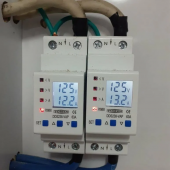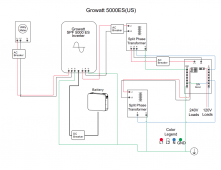Goboatingnow
Solar Enthusiast
- Joined
- Jul 3, 2022
- Messages
- 1,325
Again typically European standards for ground rod test impedances is < 1 ohm. ( I was present when we tested my mothers ground rod install recently )there is no RCBO style safety devices on my country, i guess no one update the standards and we are working with old standards.
Hence you circuit is “ safe “ as long as the ground loop impedance remains low. as a case fault will blow the fuses as needed.
However these days in the EU ground rod systems are largely defunct replaced by TT-C-S or TT-N-S, pure TT systems such as your diagram still exist.
EU codes now demand all house RCBO so new installs will have them.
Many older domestic installs are unsafe by modern wiring codes.
The overriding point is your diagram is not representative of a typical US split phase supply and grounding
However your diagram is not unsafe but it’s not up to modern expectations in AC safety , this requires adding extra protection. ( edited for clarity )
Hence your diagram merely adds confusion to the debate
Last edited:






